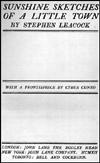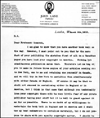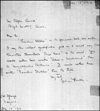



 |

Homepage |

Contents |
 |
Stephen Leacock's
Sunshine Sketches of a Little Town |
|
The ideas in the following commentary on Sunshine Sketches are derived entirely from Gerald Lynch's Stephen Leacock: Humour and Humanity (Montreal-Kingston: McGill-Queen's University Press, 1988), Jack Hodgins's "Afterword" in Sunshine Sketches of a Little Town (Toronto: McClelland and Stewart Limited, 1989. pp. 187-191), and Robertson Davies's Stephen Leacock (Canadian Writers, no. 7. Toronto: McClelland and Stewart, 1970).
|


 |
Stephen Leacock's masterpiece is Sunshine Sketches of a Little Town, published in 1912. Two years later, Leacock published a possible companion to Sunshine Sketches, Arcadian Adventures (1914). Together, these short-story cycles reveal the entire breadth of Leacock's concerns as an artist and thinker. In this way, Sunshine Sketches and Arcadian Adventures should be viewed together, for either one without the other cannot be entirely understood. Gerald Lynch explains that at opposite poles of Leacock's artistic vision are Plutoria of Arcadian Adventures and Mariposa of Sunshine Sketches. Mariposa is a little Canadian town (an ideal community) that allows for human folly whereas Plutoria is an American metropolis (a negative exemplar of community) that supports absurd individualism. The centre on which both of these books turn is the Mausoleum Club: Arcadian Adventures begins in the Mausoleum Club and Sunshine Sketches ends in the Mausoleum Club. The Mausoleum Club represents a fixed point and yet it is a point from which both books depart. Mariposa is a town that a Mausoleum Club member was likely raised in; Mariposa represents for this Mausoleum Club member a past to be remembered, a pastoral and idyllic town. Plutoria, on the other hand, is a city that a Mausoleum Club member is likely moving towards; Plutoria is what the future holds if it is not already a reality, an obsession for what is mechanical and material. |
|
Sunshine Sketches has attracted world-wide admiration. Nowhere else is it more cherished than in Canada. Mariposa is bathed in the warm sunshine for all of us to laugh at as each one of us remembers the little towns we might have known or come from. If there is any harsh satire, it is immediately washed out by warm sunshine. Satire does not infect Sunshine Sketches as it does Arcadian Adventures. In fact, Sunshine Sketches' juxtaposition with Arcadian Adventures only further dramatizes the idealized picture of the little Canadian town. Mariposa of Sunshine Sketches is pastoral and idyllic whereas Plutoria of Arcadian Adventures, by comparison, is mechanized and demonic. Mariposa - good. Plutoria - bad. Such a simple dialectic of Canadian town versus American city, however juvenile it appears, is a fundamental element to the Canadian imagination as it reveals itself in its literature. Ironically, Mariposans try to imitate this negative exemplar of humanity - the city - throughout Sunshine Sketches. Mariposans never quite achieve city status despite their attempts to do so. Josh Smith's new Caff illustrates this point: the Caff never does acquire the "Girls Room" that the city bars possess.
|


 |
But Sunshine Sketches is not a national tale in the strict sense nor is it a monumental novel that Canada points to as its fountainhead or as its primary myth. Sunshine Sketches is hardly Canada's Moby Dick or Huckleberry Finn. Canadian scholars have often lamented the fact that Leacock was not a novelist, and that he did not produce a national tale of some sort. Leacock is not a novelist, he is a short-story writer. We cannot ignore that Sunshine Sketches is a series of "sketches." Although it shares many characteristics of the novel, it is more properly defined as a short-story cycle. It is in part very Canadian that Sunshine Sketches is a collection of sketches or drawings. Where other nations' artists create bold paintings, Canada's Stephen Leacock creates black-and-white sketches. Sketches are incomplete paintings, and Canada was in many ways an incomplete nation. Perhaps it is not Leacock who is at fault but rather the Canadian reader who is at fault for believing that Leacock is a premature novelist. Canadian readers could never conceive of themselves as bold and masterful paintings. Jack Hodgins points to this disparity in Canada's view of itself:
The rest of the world can erect its great monumental literary images all it wants, Leacock suggests, but look for a moment at what happens when we try to cast ourselves in such Great Moments. We end up looking foolish. And we know how foolish we look. Furthermore, we like ourselves for it all the same! ("Afterword." Sunshine Sketches of a Little Town. Toronto: McClelland and Stewart, 1989. p.188)
The sinking of the Mariposa Belle is just one of the many examples where Mariposans, when in the midst of a great moment, inevitably fall short. The narrator is always highlighting the human folly of Mariposa. Nevertheless, it is in these follies that the Little Town of Marisposa is redeemed. We recognize that the mistakes of the characters in the book are the mistakes in all of us. The Little Town somehow becomes, above all, the hero of the book. The same could be said of Sunshine Sketches as a book. Although it is fragmented when compared with the novel, it derives power from its literary form or rather aformity. It might be said that Sunshine Sketches is a magical book that, through a mysterious alchemical process, has transformed itself (like Peter Pupkin) from a fragmented work of tales into an enchanted Tale (a national tale?) about an enchanted time and place. Others might simply say that Sunshine Sketches derives its magic from our imagining memory and our desire for nostalgia. Whatever the case may be, Sunshine Sketches remains as popular in Canada today as it was in 1912.
|



 |
The narrator of Sunshine Sketches is a magnetic force in the book, and is the ultimate source of the book's complexity. At times intimately close to the comings and goings of Mariposa life, the narrator often keeps his distance so as to sustain the focus on human folly. And yet he is at root a Mariposan. In this way, the narrator almost always has one foot in Mariposa whereas the other foot is in the city's Mausoleum Club. Leacock's artistry reaches its apex in Sunshine Sketches as the laughter comes together from two opposing directions. At one end, the narrator is poking fun at the Little Town attitude by holding it up for everyone to see. At the other end, the narrator is deeply attached and attracted to the object of that fun. Leacock has created a picture that enables the reader to look down on the Mariposans, all the while, their estimation in the reader's hearts has been raised higher. The narrator himself is something of a chameleon-like character who is never fixed. There are at least three distinct narrators in the book. First, the authorial narrator of the Preface, second, the narrator of the sketches proper, and third, the narrator of "L'Envoi." With each new narrator there is an adjustment and shift in perspective. In fact, Sunshine Sketches is an elaborate web of varying perspectives and varying narrators. No single perspective dominates, even though all of the perspectives compete for the reader's attention.
Sunshine Sketches was originally published in a serialized version in the Montreal Star (February 17, 1912- June 22, 1912). Many of the characters are derived in part from people actually living in Orillia, Ontario. Dr. C.H. Hale in the Orillia Packet and Times (March 12, 1957) has written about the connection between the actual people and their parallel characters. Many of the names, in fact, were altered when Sunshine Sketches was published in book form. For all its claims of being the typical Canadian town, Mariposa is essentially an Ontario town.
|

Top
|
|
|